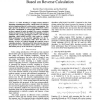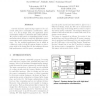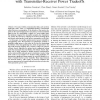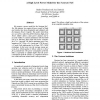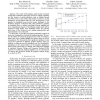ISCAS
2006
IEEE
14 years 5 months ago
2006
IEEE
—As turbo decoding is a highly memory-intensive algorithm consuming large power, a major issue to be solved in practical implementation is to reduce power consumption. This paper...
IPPS
2006
IEEE
14 years 5 months ago
2006
IEEE
Current electronic system design requires to be concerned with power consumption consideration. However, in a lot of design tools, the application power consumption budget is esti...
IPPS
2006
IEEE
14 years 5 months ago
2006
IEEE
Fault-tolerant Beacon Vector Routing (FBVR) is an efficient technique for routing in the presence of node failures. Several common wireless topologies exist that can be used with...
IPPS
2006
IEEE
14 years 5 months ago
2006
IEEE
Granularity control is an effective means for trading power consumption with performance on dense shared memory multiprocessors, such as multi-SMT and multi-CMP systems. In this p...
IPPS
2006
IEEE
14 years 5 months ago
2006
IEEE
Recently, under a fixed power budget, asymmetric multiprocessors (AMP) have been proposed to improve the performance of multi-threaded applications compared to symmetric multiproc...
INFOCOM
2006
IEEE
14 years 5 months ago
2006
IEEE
— For many wireless communication links, such as those employing turbo codes or sequentially-decoded convolutional codes, the power consumption of the decoder at the receiver dep...
DSD
2006
IEEE
14 years 5 months ago
2006
IEEE
We propose a power model for the Nostrum NoC. For this purpose an empirical power model of links and switches has been formulated and validated with the Synopsys Power Compiler. T...
DATE
2006
IEEE
14 years 5 months ago
2006
IEEE
— The world of 3D graphics, until recently restricted to high-end workstations and game consoles, is rapidly expanding into the domain of mobile platforms such as cellular phones...
DATE
2006
IEEE
14 years 5 months ago
2006
IEEE
Traditionally, active power has been the primary source of power dissipation in CMOS designs. Although, leakage power is becoming increasingly more important as technology feature...
CODES
2006
IEEE
14 years 5 months ago
2006
IEEE
Design of System-on-Chip (SoC) with regular mesh based Network-on-Chip (NoC) consists of mapping processing cores to routers, and routing of the traffic traces on the topology suc...
